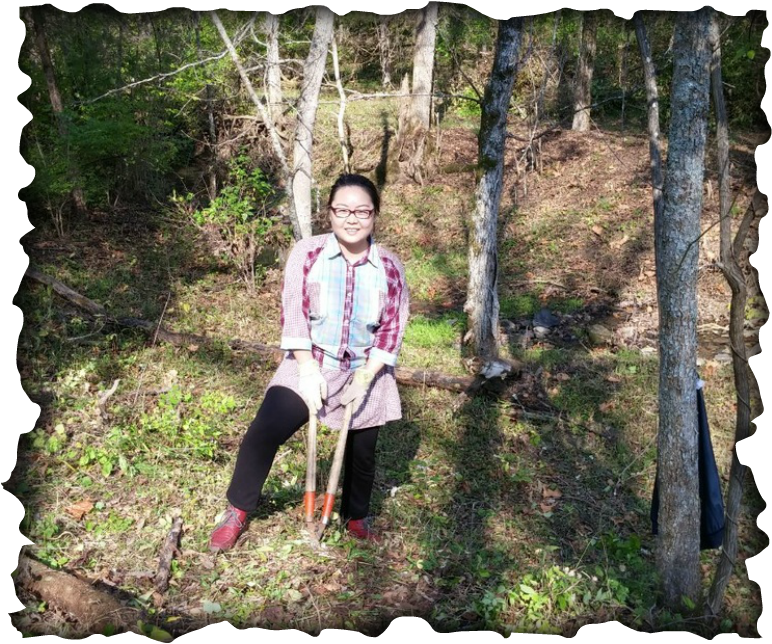At Pleasant Ridge, protecting all of our natural resources is a way of life.
We use Best Management Practices in all of our woodland activities, including protecting our beautiful ponds and creeks. Best Management Practices are designed to protect water quality from non-point source pollution by preventing or reducing the movement of sediment, nutrients, pesticides and other pollutants associated with agricultural actives into surface or ground water. Non-point source pollution is defined as water pollution from a non-specific point such as muddy water runoff from a field or logging road as opposed to point source pollution from a factory outlet pipe. Best Management Practices have been developed to achieve a balance between water quality protection and doing what needs to be done for the necessary management of our forestland.
Clearing Bush Honeysuckle
Bush honeysuckle has invaded our land, forming a thick shrub layer that crowds and shades out native plant species.
They destroy our habitats by decreasing light availability, by depleting soil moisture and nutrients, and preventing other plant species from growing.
Plus, bush honeysuckle berries do not offer migrating birds the high-fat, nutrient-rich food sources needed for long flights, that are supplied by native plant species.
They destroy our habitats by decreasing light availability, by depleting soil moisture and nutrients, and preventing other plant species from growing.
Plus, bush honeysuckle berries do not offer migrating birds the high-fat, nutrient-rich food sources needed for long flights, that are supplied by native plant species.
Responsibilities of Forest Stewardship
We make every effort to ensure an adequate and diversified supply of food and cover to maintain or increase wildlife populations, both game and non-game. For example, a timber harvest will provide deer browse and a pine grove will provide deer cover. A timber stand improvement operation may reduce non-mast producing trees, such as elm, and increase mast production by the remaining oaks and provide dens for cavity-nesting birds and animals such as raccoons. Understory species such as dogwood, redbud, and serviceberry which are not competing with desirable trees, may also be retained for aesthetic and wildlife purposes. In the case of our farm, as well as many Central Kentucky farms, the rampant spread of Bush Honeysuckle must be stopped from choking out all of our native species woodlands.
There are a variety of conditions which may negatively affect tree growth as well as the health of the forest ecosystem. Included in this would be all diseased or unhealthy trees. We have chosen the removal of these trees in order to break the lifecycle of certain insects and disease organisms.
We make every effort to ensure an adequate and diversified supply of food and cover to maintain or increase wildlife populations, both game and non-game. For example, a timber harvest will provide deer browse and a pine grove will provide deer cover. A timber stand improvement operation may reduce non-mast producing trees, such as elm, and increase mast production by the remaining oaks and provide dens for cavity-nesting birds and animals such as raccoons. Understory species such as dogwood, redbud, and serviceberry which are not competing with desirable trees, may also be retained for aesthetic and wildlife purposes. In the case of our farm, as well as many Central Kentucky farms, the rampant spread of Bush Honeysuckle must be stopped from choking out all of our native species woodlands.
There are a variety of conditions which may negatively affect tree growth as well as the health of the forest ecosystem. Included in this would be all diseased or unhealthy trees. We have chosen the removal of these trees in order to break the lifecycle of certain insects and disease organisms.
